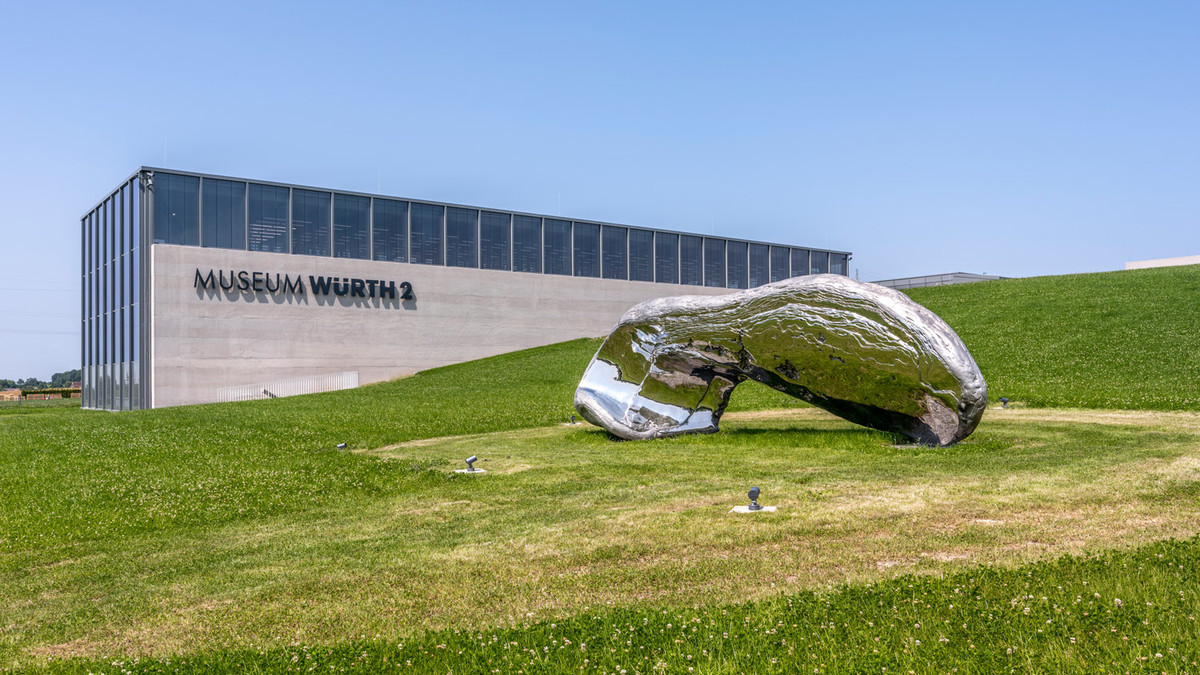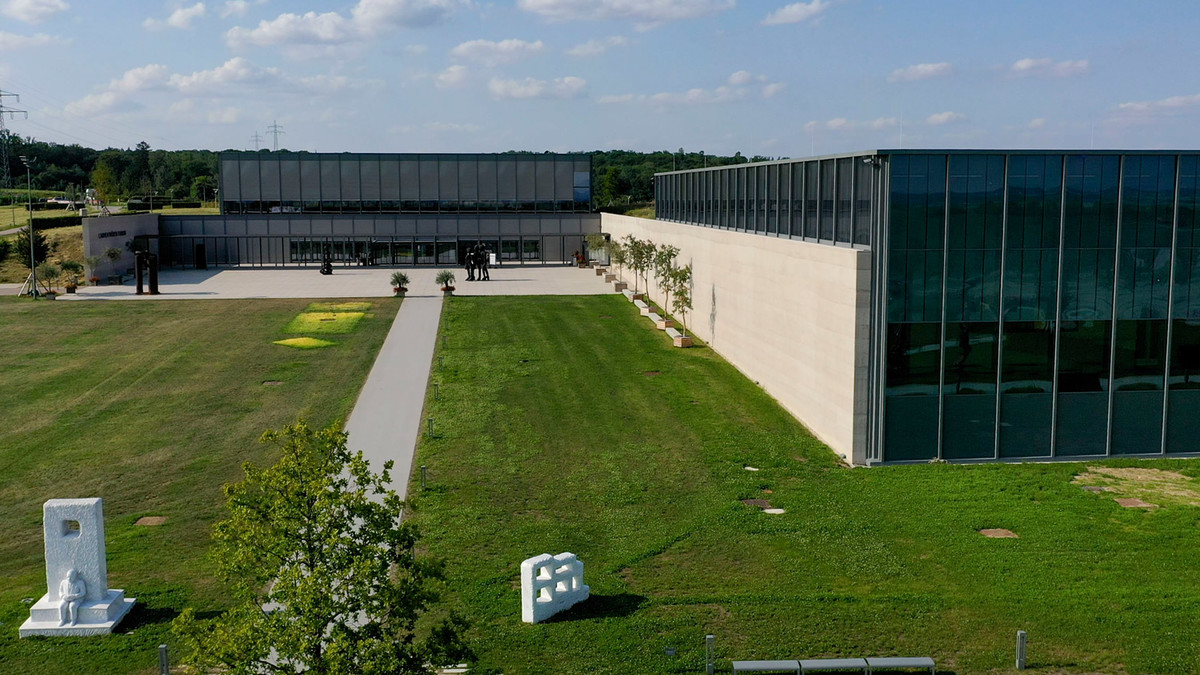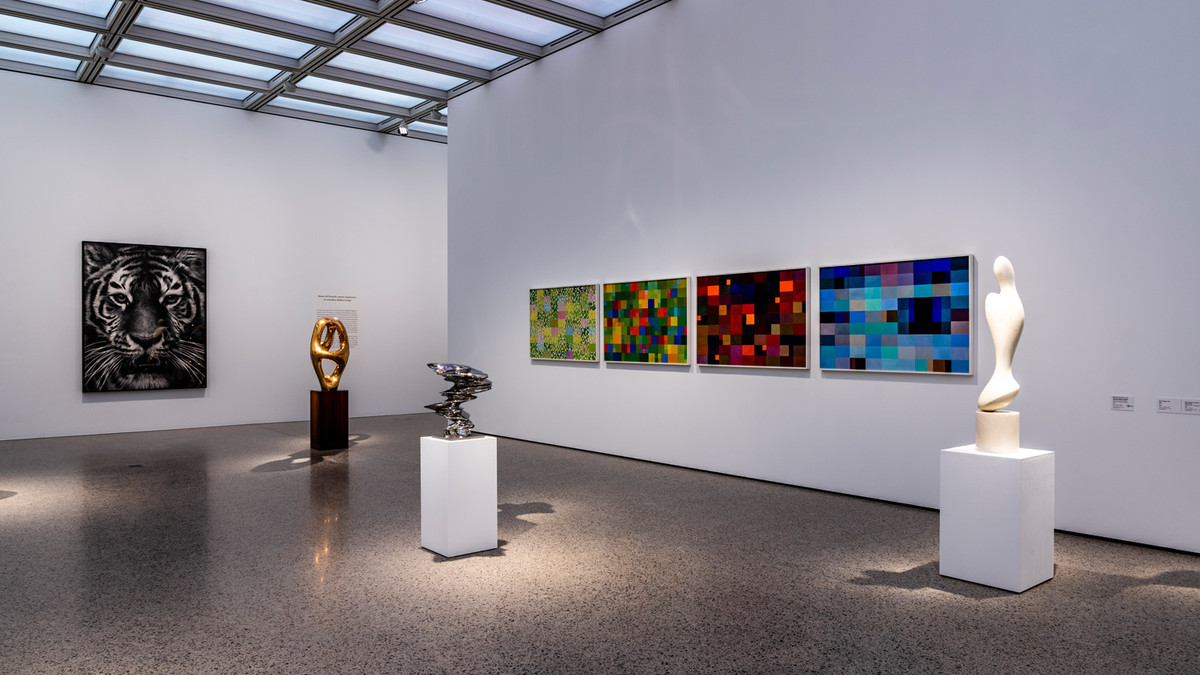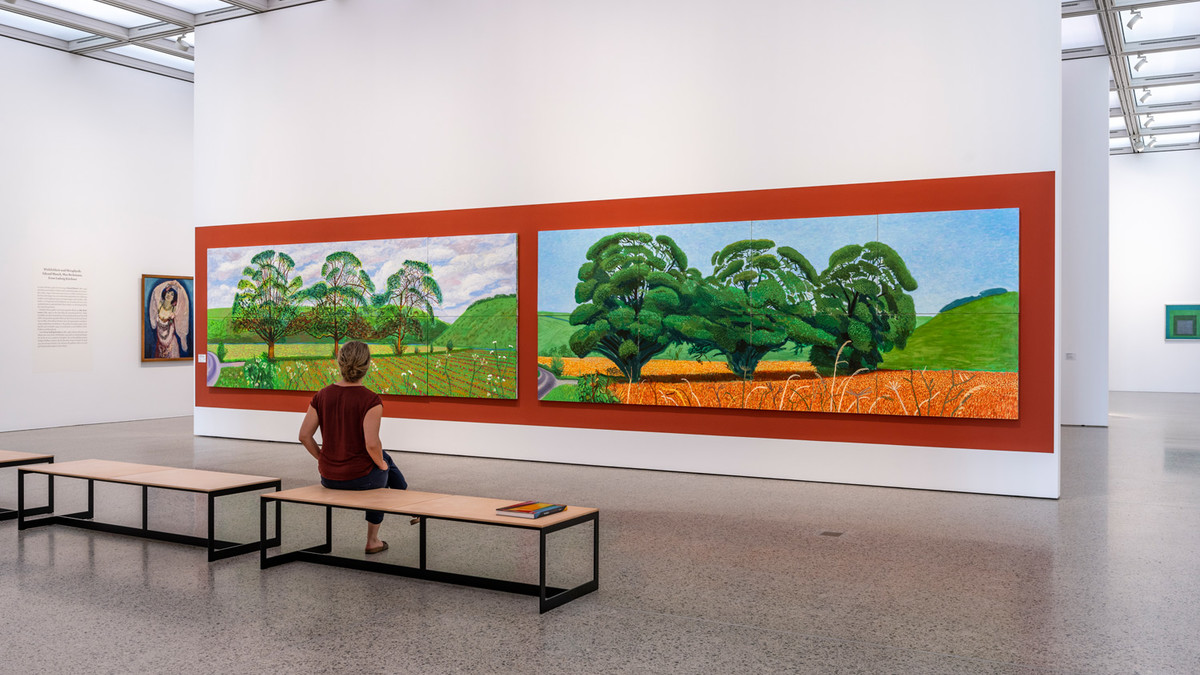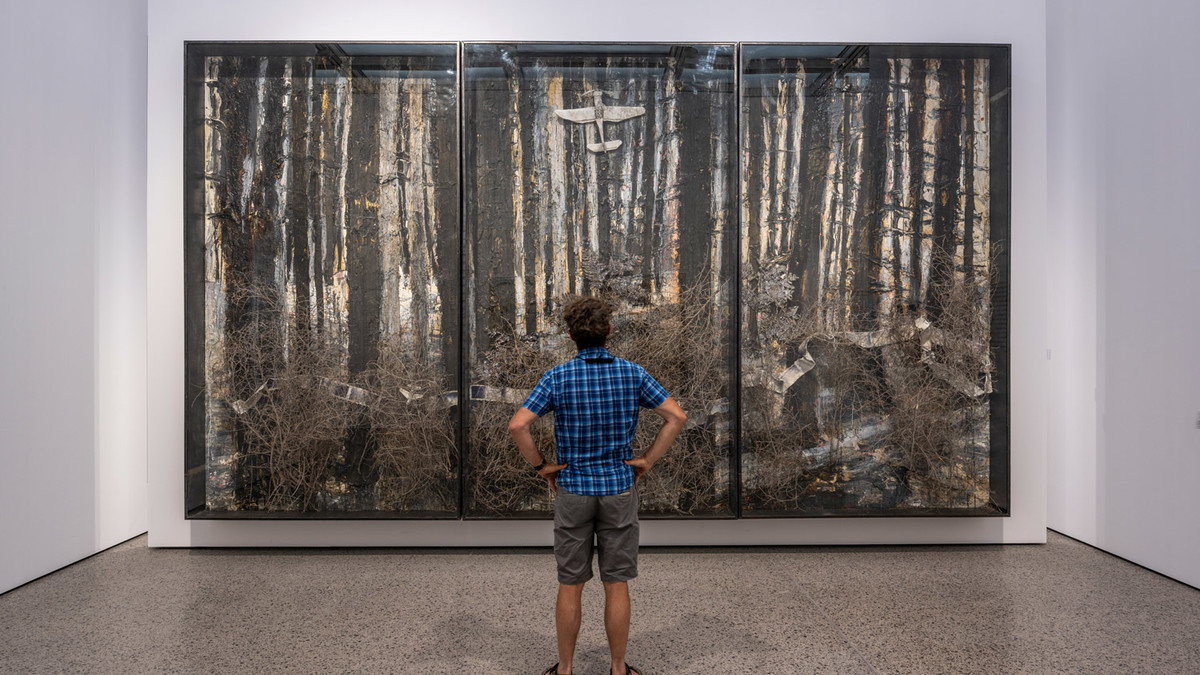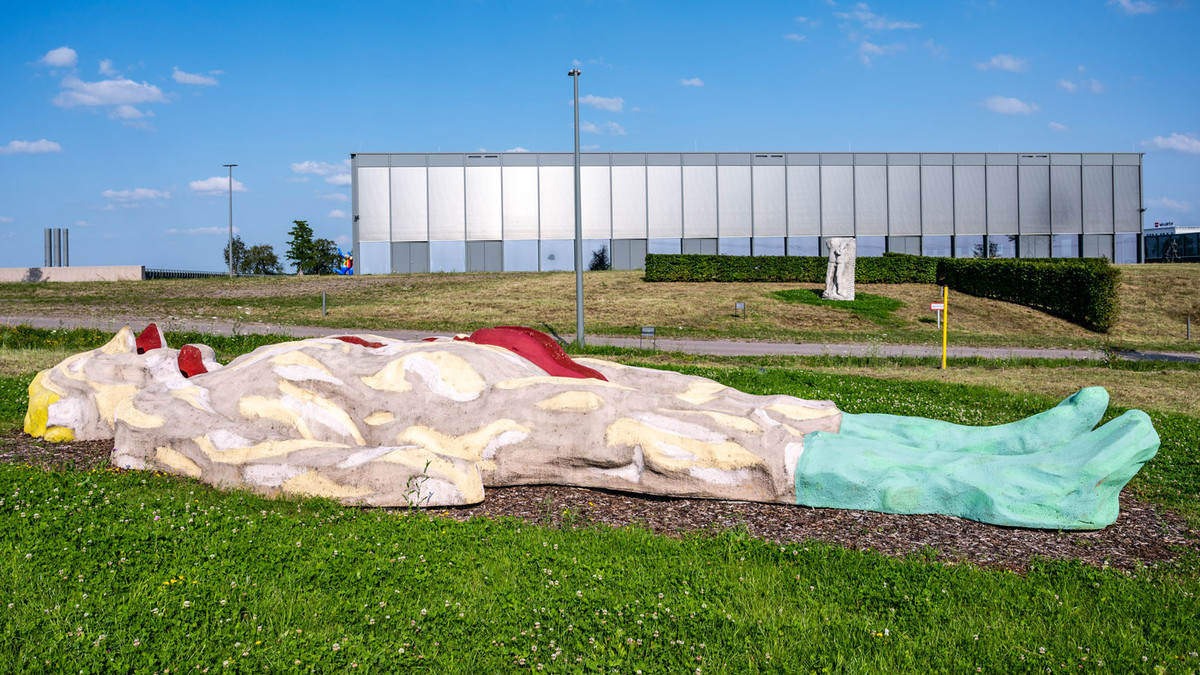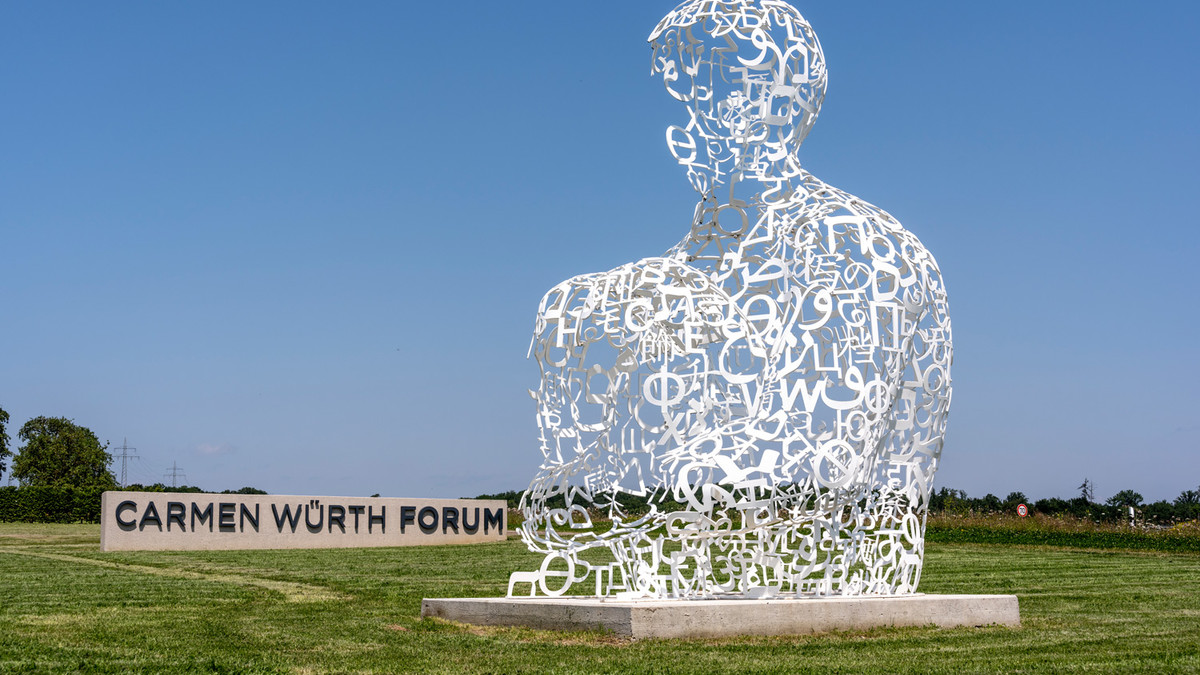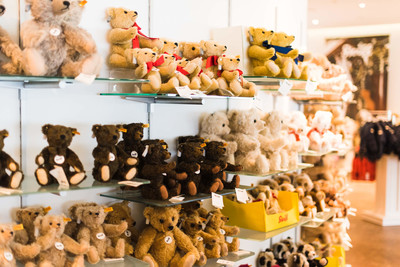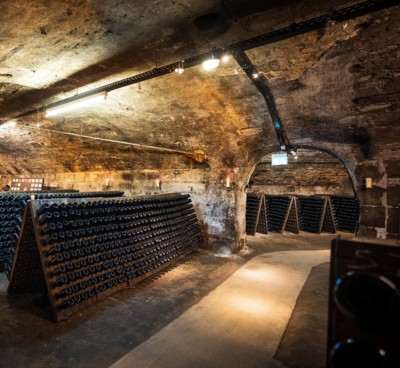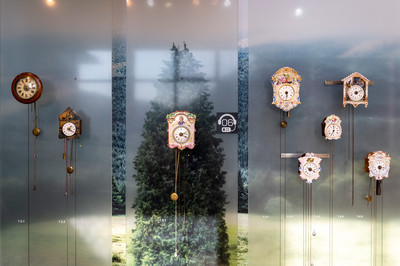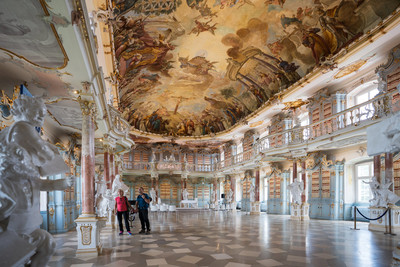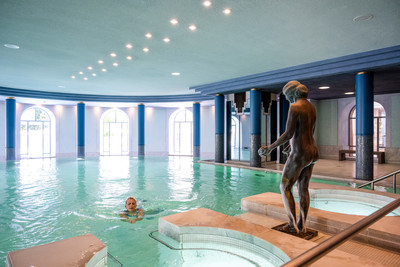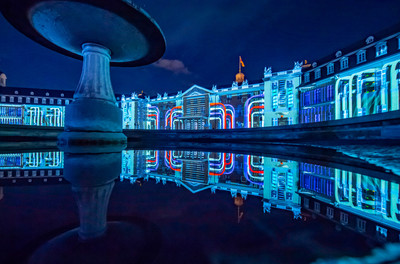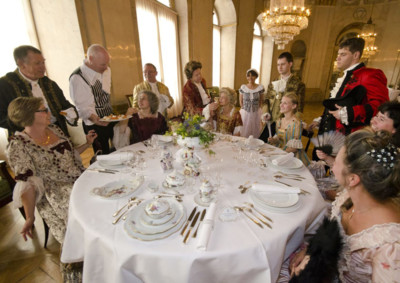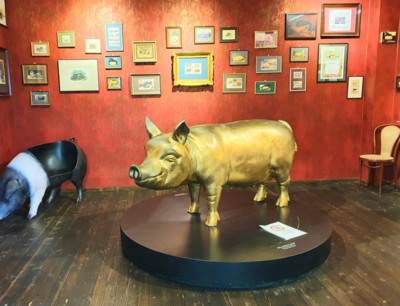Hohenlohe
Collector’s treasures
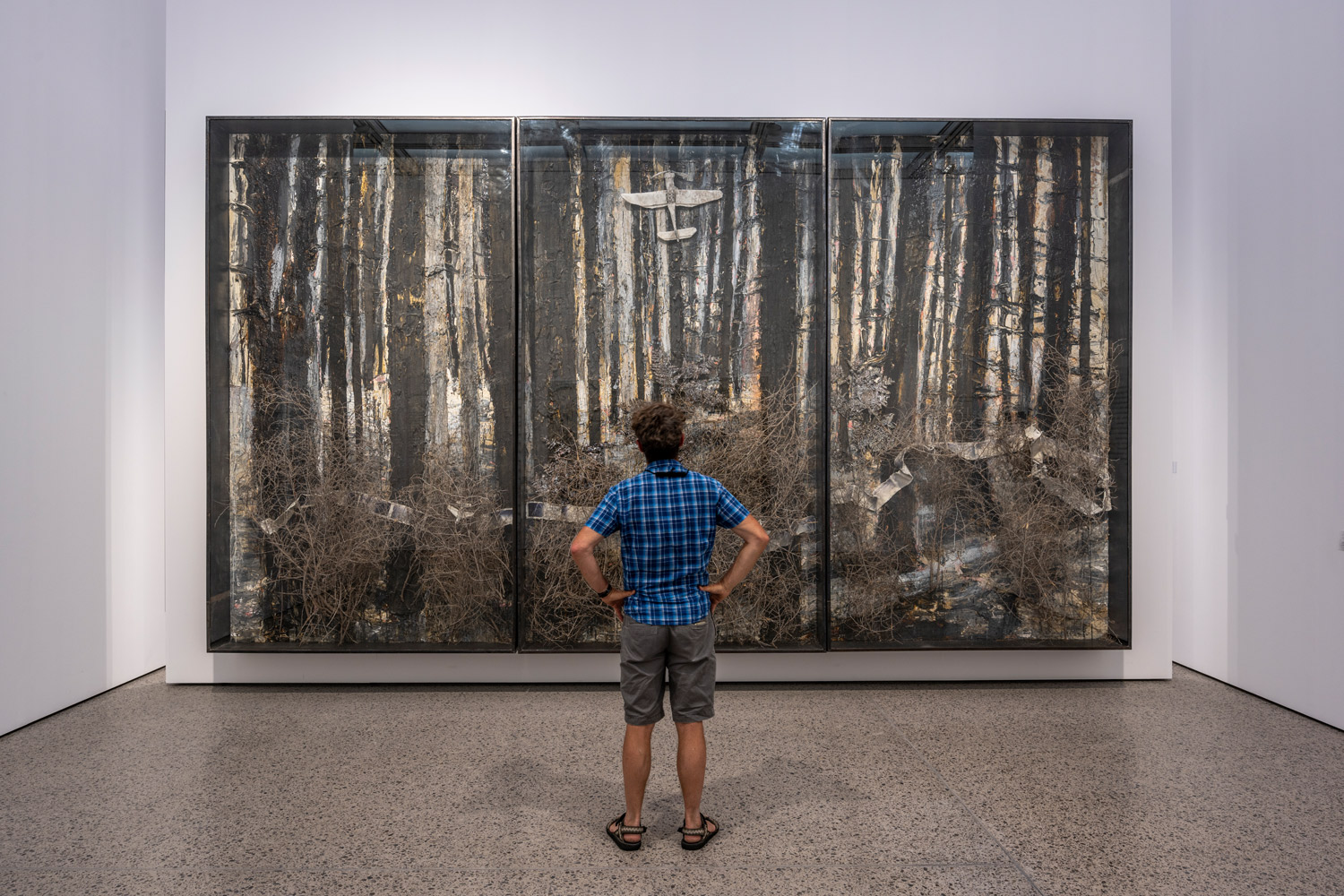

He’s done it again! Reinhold Würth has opened a museum: Würth 2, his fifth in Germany. But what does the fastening and installation technology that made Würth’s fortune have to do with art and culture? A huge amount, says Würth.
Not every visitor notices the man standing horizontally on the wall, five metres up, as if he were about to walk down it. Many go down the stairs to the basement without looking at the ceiling. For a while, a woman even attentively studies the concrete staircase to which the information tag is affixed. Is the staircase the work of art...? When her friend draws her attention to the sculpture in the air, they both laugh aloud. Their chortles resound through the open museum halls, dance by Max Ernst’s painted wooden door and fade away as they reach David Hockney’s huge Four Seasons, the Three Trees near Thixendale.
Würth 2 is a fascinating place – the highlights of Reinhold Würth’s art collection are showcased here. One hundred and fifty works dating from between the late 19th century and the present day, including pieces by Picasso, Ernst and Munch, carefully selected from a collection that already comprises over 18,500 artworks.
Inside the museum, the capaciousness, the height of the 5.5m (18 feet) walls, the ceiling of matt glass, are all inspiring. You could spend a lot of time in this exhibition space of 1,000 m² (almost a quarter of an acre) over two floors. Then you could rest your eyes in the Belvedere, a glazed room with a view of Hohenlohe’s landscape.
Reinhold Würth, now over 80 years old, took over his father’s screw wholesale business in Künzelsau, Hohenlohe, in 1956. He was 21 years old at the time. He acquired his first artwork in the same decade – and has never stopped buying art since then. The collection grew with the business, and Würth began to exhibit pieces from his collection at company sites and to build suitable spaces for them. Why? Because he believes that art inspires, encourages, stimulates curiosity and animates – and that’s exactly what is wanted from both employees and employers. Würth’s granddaughter Maria describes her grandfather in the following words: “He doesn’t collect to own things, he collects to share them.”
18,500 artworks: an unimaginable number for people who buy art to put it on the wall, or to exhibit it, but patronage, the promotion of art and culture by private individuals, is enormously important to the world of art. This is because collectors who buy works of art from the artist protect those works and keep them safe. And Würth’s collection does not feature only big names, but also works by unknown artists from his homeland.
But back to Museum Würth 2, the collection of Würth’s favourite pieces and the symbol of his cultural life’s work. How did he feel as he walked through this scenery when the museum was opened in June 2020? Definitely just a little bit at home.

